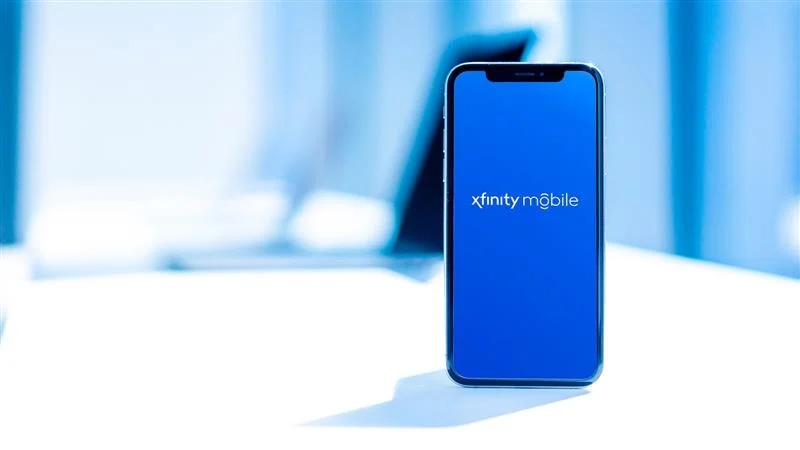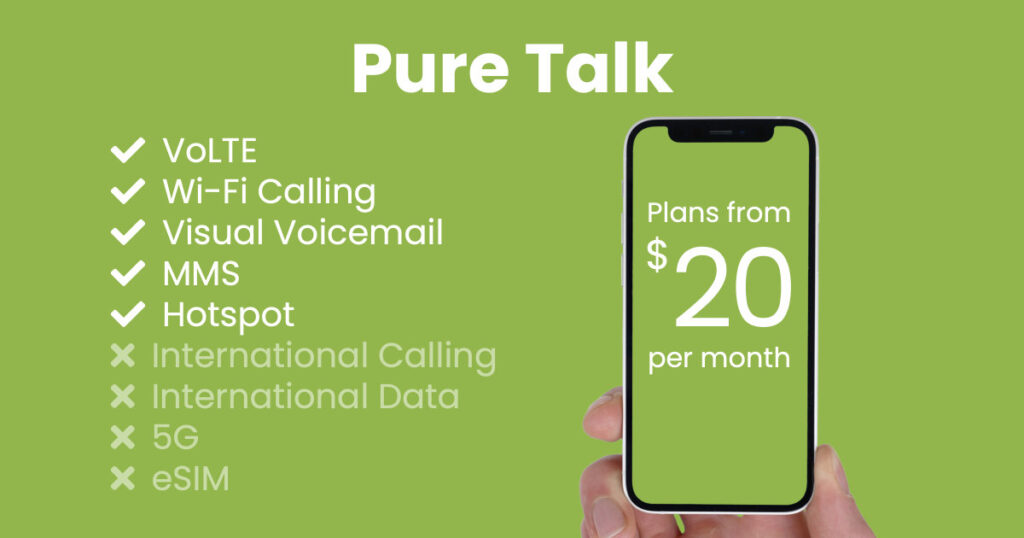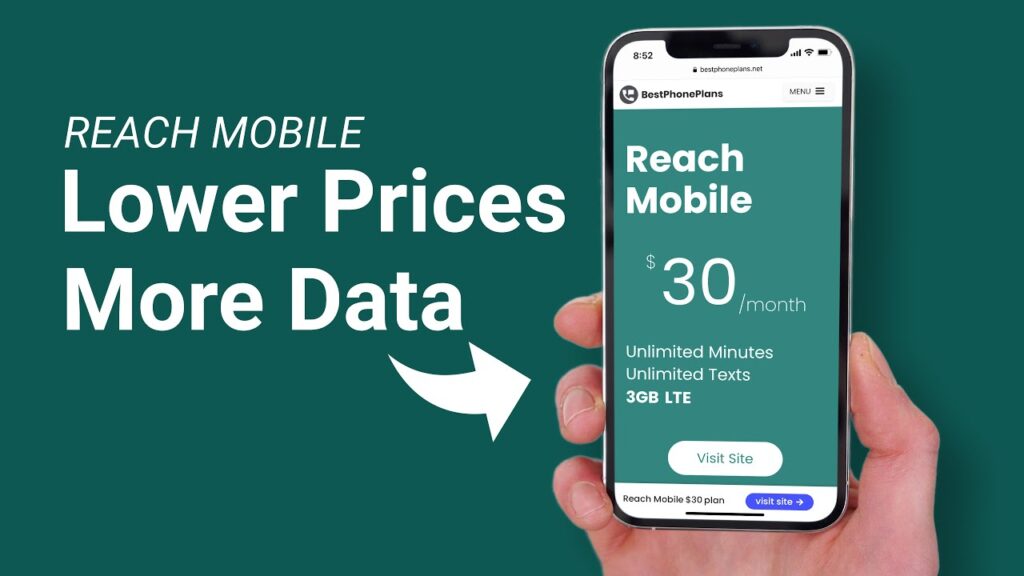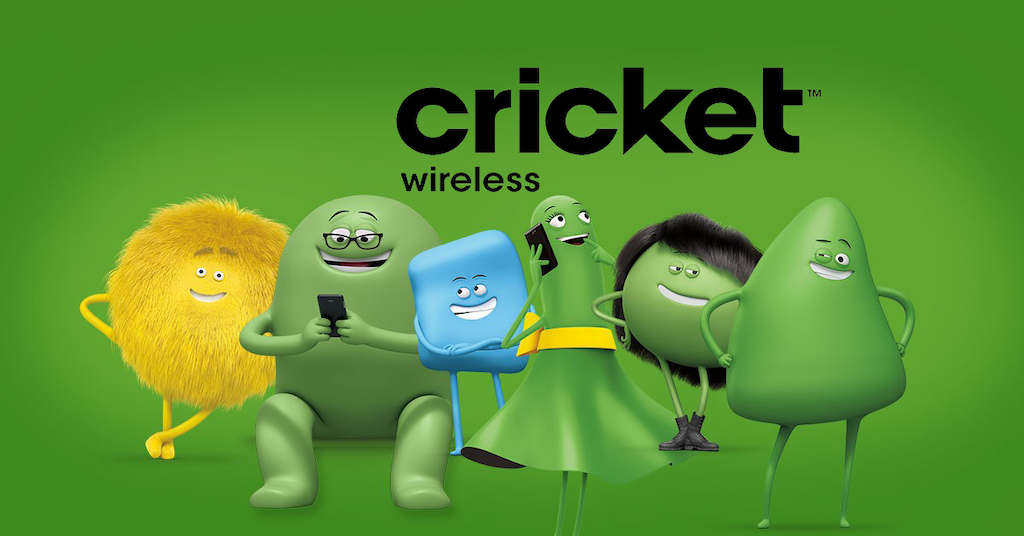In the highly competitive American cell phone market, numerous providers vie for customers, including major carriers like AT&T, Verizon, and T-Mobile, as well as over 120 mobile virtual network operators (MVNOs) that utilize these carriers’ networks to offer their own plans.
With such an abundance of choices, it can be challenging to determine the ideal cell phone plan for your needs. Fortunately, this guide is designed to simplify the process. We have carefully reviewed and compiled a list of the top 10 cell phone plans available, saving you the hassle of guesswork.

Discover our selection of the best cell phone plans of 2023 below, and find the one that suits you perfectly:
- Mint Mobile – The ultimate all-around cell phone plan
- Tello – Ideal for budget-conscious individuals seeking affordable plans
- AT&T – Perfect for data-intensive families
- Visible – Offers enticing rewards for referring friends
- Xfinity Mobile – Enables cost-sharing among up to 10 people
- Verizon Wireless – Tailored for avid gamers and streamers
- PureTalk – Delivers affordable plans with generous data options
- Reach Mobile – Designed for users with varying data needs each month
- Cricket Wireless – Provides affordable no-contract plans with 5G data
- Boost Mobile – Offers inexpensive prepaid plans with sufficient high-speed data

Mint Mobile:
Mint Mobile, operating on T-Mobile’s expansive 5G and 4G LTE network, offers a range of four cell phone plans. What sets Mint Mobile apart is its innovative marketing strategy, which includes several noteworthy features. Firstly, new subscribers enjoy a significant discount during the initial 3 months of service. Additionally, Mint Mobile offers a complimentary SIM card and a 7-day trial that can be gifted to a friend. The company also garners attention through promotional campaigns featuring Ryan Reynolds, who is not only a part-owner but also a well-known Hollywood star.
With an impressive 4.6-star rating derived from approximately 5,000 customer reviews on Trustpilot, Mint Mobile stands out as a mobile plan provider with a highly regarded reputation. Customers particularly appreciate Mint Mobile for its competitive pricing compared to the major carriers, reliable service quality, and user-friendly website and mobile application.

Tello:
Tello has earned a prominent reputation as a leading provider of affordable, no-frills cell phone plans. What sets Tello apart is its customizable approach, allowing you to tailor your plan to your specific needs. You have the flexibility to choose the number of minutes (ranging from zero to unlimited), the amount of data (ranging from zero to 25 GB), and enjoy unlimited texts. Tello’s pricing structure is designed to align with your choices, with plans starting as low as $5 per month, which includes unlimited minutes and limited data.
As a budget-friendly cell phone operator, Tello offers the convenience of bringing your existing phone to their network free of charge. Alternatively, you have the option to purchase a new or refurbished device from Tello at an affordable price, with prices starting as low as $69. The result is that Tello stands out as a significantly more cost-effective option compared to major mobile operators, and it does so without imposing any contracts or long-term commitments.

AT&T:
AT&T provides a diverse selection of cell phone plans operating on its own AT&T Mobility mobile network, ensuring coverage for 99% of American households. With its extensive network, AT&T offers 5G mobile coverage to over 225 million individuals across 14,000 cities and towns in the United States. Additionally, AT&T’s 5G Plus is available in select areas of 13 cities. All AT&T plans include unlimited minutes, texts, and data, although there is a cap on high-speed data.
While AT&T is a viable choice for families, it may be less attractive for individuals. The plans tend to be relatively expensive for one or two users, but they become more reasonably priced when catering to four or five lines. One notable advantage of choosing AT&T is the faster data speeds it provides compared to third-party operators that utilize its infrastructure. This makes AT&T an appealing option for families that heavily rely on mobile data.

Visible:
Visible Wireless stands out among providers by offering truly unlimited data without the risk of data throttling after reaching a certain usage threshold. While it operates on the Verizon Wireless network (which Visible Wireless utilizes), during periods of high network congestion, there is a possibility of experiencing slower data speeds. It’s important to note that this can occur across all cell phone providers and not specific to Visible Wireless. However, unlike some other providers, Visible Wireless does not impose any caps on high-speed data, allowing you the freedom to utilize as much data as you need without restrictions.

Xfinity Mobile:
When you become an Xfinity Mobile subscriber, you have the option to have up to 10 lines associated with a single account. The eligibility for the number of lines is determined through a credit check. All Xfinity Mobile plans include unlimited nationwide talk and text as standard. The main distinction between the plans lies in the amount of data included, which starts with the choice between an “Unlimited” or “By the Gig” plan.
The Unlimited plan is priced at $45 per line per month. For instance, this translates to $45 per month for one person, $135 per month for three people, or $450 per month for 10 people. Each line on the Unlimited plan receives 20 GB of high-speed data usage. Beyond that threshold, the data speed is reduced for the remainder of the billing cycle, but you won’t incur any additional charges for exceeding the data limit.
On the other hand, the By the Gig plan allows you to pay for the specific amount of data you require. The available options for data allowances are 1 GB for $15 per month, 3 GB for $30 per month, or 10 GB for $60 per month. The advantage of the By the Gig plan is that you can distribute the data across multiple lines. For example, if you’re part of a group where each individual only requires 1 GB of data per month, the cost would be $6 per person per month.
Xfinity Mobile offers flexibility in terms of line quantities and data plans, ensuring that you can choose the most suitable option based on your usage and the number of users on the account.

Verizon Wireless:
Verizon presents a range of five comprehensive and high-speed cell phone plans. All plans offer unlimited minutes and texts, along with unrestricted access to the Verizon Wireless 5G Nationwide network. This network stands as the second-largest 5G network in the United States, reaching over 230 million customers across 2,700+ cities. The plans vary in terms of premium data limits, depending on the subscription price.
Similar to other major telecommunications providers, Verizon primarily caters to the premium segment of cell phone customers. While it may not be the most budget-friendly option, Verizon compensates for this with its exceptional data speeds and additional perks. Subscribers can enjoy complimentary access to popular services such as Disney+, Apple Music, and Discovery+ for a duration of 6 to 12 months. Moreover, Verizon offers a child-friendly plan with parental controls, making it an attractive choice for families with underage children.

PureTalk:
PureTalk is a cellular provider renowned for its affordable plans, starting as low as $20 per month. With PureTalk, all plans encompass unlimited talk and text, and notable benefits include the absence of contracts or data overage charges. Leveraging AT&T’s extensive nationwide network, PureTalk guarantees coverage across 99% of the United States, with 5G coverage available in most major cities.
When opting for PureTalk, you have the flexibility to bring your own phone and retain your existing number. Alternatively, if you require a new device, PureTalk offers a wide selection of models from popular brands like Samsung, Apple, Nokia, and ZTE. Moreover, signing up for a PureTalk plan often grants you the opportunity to enjoy discounts on these devices. Notably, PureTalk ensures a transparent experience with no activation fees or hidden charges, providing straightforward pricing and services.

Reach Mobile:
With extensive experience in the mobile industry, we encountered numerous aspects that we believed could be improved. This led us to contemplate the following question: What kind of mobile service would we truly desire? The answer was clear: a straightforward, digital experience with a personal touch. We aimed to eliminate contracts, convoluted fine print, and instead implement policies grounded in common sense. Establishing these principles as the foundation of our company, we then associated a grand aspiration with it.
In the 21st century, connectivity and internet access have become as fundamental as the freedom of speech. However, astonishingly, there are still 3.9 billion individuals who lack access to these essential resources. Despite our relatively modest size, we embarked on a mission to make a meaningful impact. We aimed to provide a digital voice to those in need, striving to bridge the digital divide and ensure that everyone has the opportunity to connect and participate in the digital age.

Cricket Wireless:
Cricket Wireless, a mobile virtual network operator, is a subsidiary of AT&T Inc. Currently, it serves over 10 million subscribers across the United States. Leveraging its association with AT&T, Cricket Wireless provides cell phone plans that benefit from AT&T’s extensive 5G mobile coverage, reaching over 225 million individuals in 14,000 cities and towns nationwide. Moreover, the coverage continues to expand, encompassing more areas over time.
In essence, Cricket Wireless offers a comparable range of services to its parent company, AT&T, but at a more affordable price point and without the requirement of an annual contract. While plans for one or two users may be slightly more expensive, Cricket Wireless becomes particularly appealing when purchasing for three or four users. It offers cost-effective access to AT&T Mobility’s high-speed data network while ensuring flexibility and freedom from long-term commitments.

Boost Mobile:
Boost Mobile, formerly owned by Sprint and recently acquired by Dish Wireless, a subsidiary of Dish Network, operates as a Mobile Virtual Network Operator (MVNO). Currently utilizing T-Mobile’s network to serve customers in the United States, Boost Mobile has plans to transition to Dish Wireless’s independent 5G network in the future. Dish Wireless is actively constructing the first standalone 5G broadband network in the country, with a commitment to covering 70% of Americans by June 2023.
Boost Mobile is recognized as a leading provider of prepaid plans, where customers pay in advance at the start of the month. This type of service offers significant affordability, with plans starting as low as $10 per month, providing unlimited talk and text with 1 GB of high-speed data. The range extends to $45 per month for unlimited talk and text with 15 GB of high-speed data. Notably, the premium $45 plan offers a discount to $35 per month after six consecutive on-time payments.
Pros:
- Affordable prepaid plans
- Discounts available for on-time payments
- Flexible options for mix and match or creating a family plan
The US cell phone market is highly competitive, with three major carriers (AT&T, Verizon, and T-Mobile) and over 120 MVNOs offering plans through their networks. This means consumers have many options to choose from. Although cell phone plans may seem similar, there are subtle variations. In summary, the best plan for one person may not be the best for another. Here are the top 10 cell phone plans to help you find the right one for you.
A mobile phone, also known as a cellphone, is a portable device that allows users to make and receive calls over a wireless connection while on the move within a service area. It differs from a landline phone, which is fixed to a specific location. Mobile phones connect to a mobile phone operator’s switching systems via a radio frequency link, granting access to the public switched telephone network (PSTN). They utilize a cellular network architecture, hence the term “cellphones” in North America. These devices offer more than just telephony, supporting various services such as text messaging, multimedia messaging, email, internet access (via LTE, 5G NR, or Wi-Fi), short-range wireless communication (infrared, Bluetooth), satellite access (navigation, messaging connectivity), business applications, video games, and digital photography. Basic mobile phones are called feature phones, while those with advanced computing capabilities are referred to as smartphones.
The first handheld mobile phone was demonstrated by Martin Cooper of Motorola in New York City on April 3, 1973, weighing around 2 kilograms (4.4 lbs). In 1979, Nippon Telegraph and Telephone (NTT) launched the world’s first cellular network in Japan. The DynaTAC 8000x, introduced in 1983, became the first commercially available handheld mobile phone. By 2014, global mobile phone subscriptions had exceeded seven billion, enough to provide one for every person on Earth. In the first quarter of 2016, the leading smartphone developers worldwide were Samsung, Apple, and Huawei, with smartphone sales accounting for 78% of total mobile phone sales. Samsung, Nokia, and Alcatel were the top-selling brands for feature phones.
Mobile phones are considered a significant human invention, widely used and sold as consumer technology. Their popularity has grown rapidly, with the total number of mobile phones surpassing the number of houses in the UK in 1999. Today, mobile phones are globally ubiquitous, with over 90% of the population owning at least one device in almost half the world’s countries.
The history of mobile phones dates back to early radio engineering stages, with the concept of a handheld mobile radio telephone service being envisioned. In 1917, inventor Eric Tigerstedt filed a patent for a pocket-size folding telephone. The development of cellular phones began after World War II, with advancements occurring in various countries. The progress in mobile telephony has been categorized into different “generations,” starting with zeroth-generation (0G) services like the Mobile Telephone Service. These early systems were not cellular, supported few simultaneous calls, and were costly.
In 1973, Motorola’s John F. Mitchell and Martin Cooper demonstrated the first handheld cellular mobile phone, weighing 2 kilograms (4.4 lbs). The first commercial analog cellular network (1G) was launched in Japan by Nippon Telegraph and Telephone in 1979. The Nordic Mobile Telephone (NMT) system was simultaneously introduced in Denmark, Finland, Norway, and Sweden in 1981. Several other countries followed suit in the early to mid-1980s. These 1G systems allowed for more simultaneous calls but still utilized analog technology. The DynaTAC 8000x, introduced in 1983, was the first commercially available handheld mobile phone.
In 1991, the second-generation (2G) digital cellular technology was launched in Finland, known as the GSM standard. This led to competition in the industry as new operators challenged the existing 1G network providers. The GSM standard, developed through European collaboration, eventually evolved into 3G, 4G, and 5G. The GSM had a significant impact, with over 5 billion people in over 220 countries using it by 2018.
The third generation (3G) was launched in Japan in 2001, followed by advancements like 3.5G and HSPA, which increased data transfer speeds and capacity. As the demand for bandwidth-intensive applications grew, the industry looked to fourth-generation (4G) technologies. The WiMAX and LTE standards were the first commercially available technologies marketed as 4G.
While 5G is a term used in research papers and projects to describe the next phase in mobile telecommunication standards, it is not officially defined in any specification or public document from telecommunication companies or standardization bodies. New standards beyond 4G are currently being developed, but they are considered part of the 4G umbrella rather than a distinct mobile generation.


